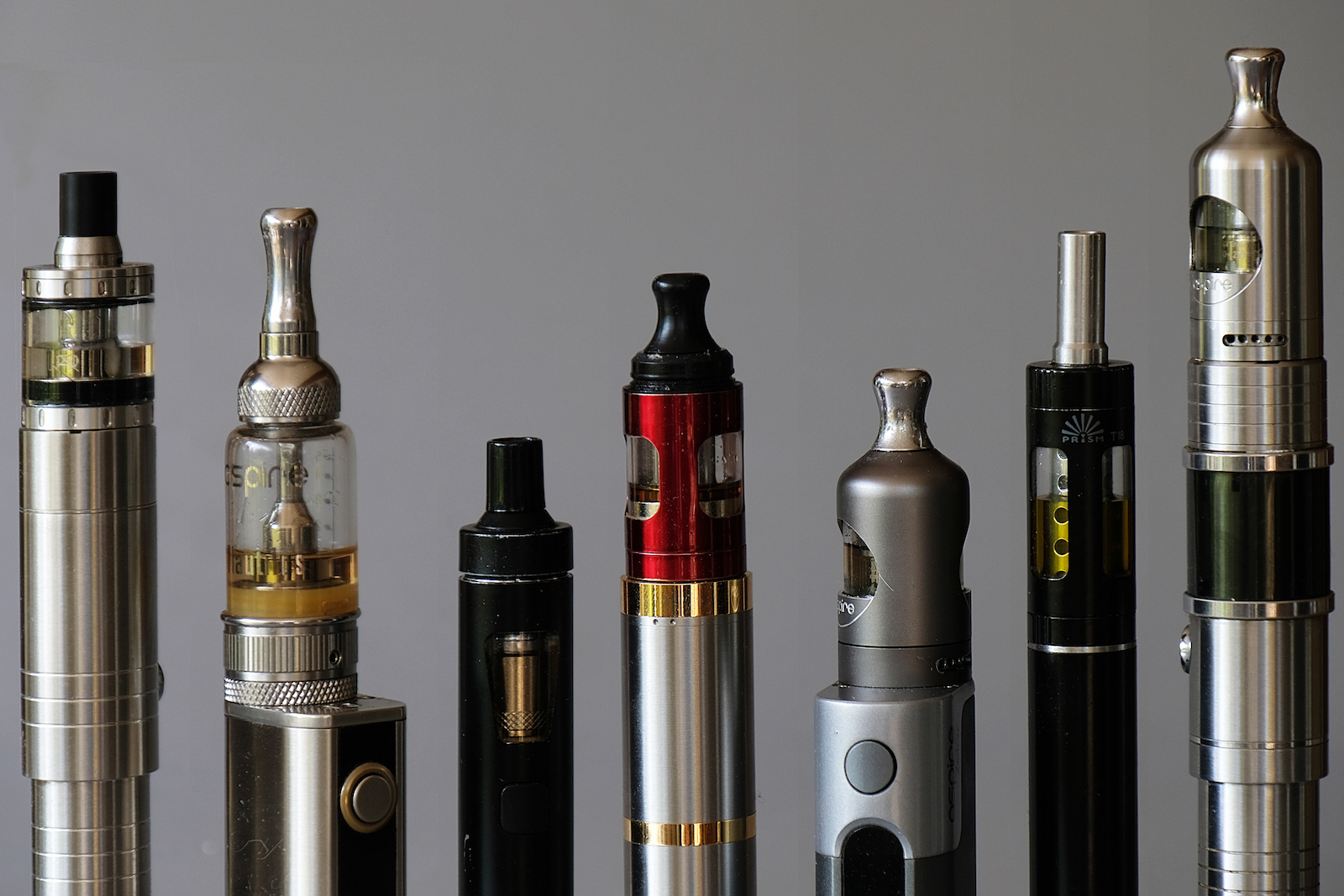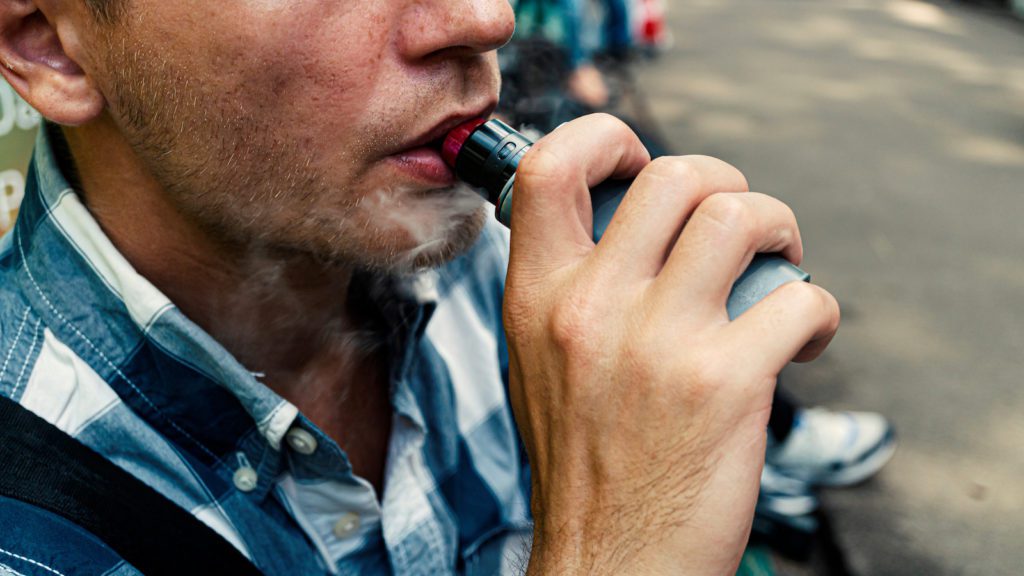
Table of Contents
Electronic smoking devices have become very popular in the past years, all thanks to sleek designs, influential youth, flavored products, and tactical marketing. Electronic pipes are part of the trend of electronic smoking, also called vaping. Although not many people rush to get a pipe, they are still members of this changing industry and are not pardoned from the issues accompanying them.
For a while, vape devices like electronic pipes were marketed as healthier alternatives to smoking traditional cigarettes or cigars. However, we now know that the vape industry was not 100% honest with the people buying their products. Vape devices are still highly under-researched because they are so new. And while some of the side effects of vaping are well-known, scientists do not know the long-term effects of vaping on the human body.
All vape devices, including electronic pipes, use a battery that heats a coil or an atomizer to turn vape juice in the device into vapor, which the user can inhale. Users can get reusable pipes that can be recharged and refilled or disposable pipes that run out of juice and power to be thrown away.
Regardless of the electronic pipe, damage to your body can occur when you use one. Addictions are also extremely common because of the nicotine in vape juice, and users need their electronic pipe or vape device more and more, which causes more damage to the body.
What Are Electronic Pipes?
Electronic pipes are a type of vape device that is shaped like traditional tobacco smoking pipes. They are powered by a lithium-ion battery that heats or atomizes a liquid called vape juice or e-liquid, which contains nicotine and often a flavor. The user inhales the vapor the same way they would from a real tobacco pipe and gets their nicotine fix.
They are popular because of their traditional style and modern functionality. In addition, people often prefer vape devices because they do not have the same smell and social stigma as cigarettes. The vape industry has cleverly created flavored vape juices to entice people to try the flavors, especially young adults and teenagers experimenting with substances.
Electronic pipes, as stated earlier, can be reusable or disposable. Still, it is more common for an electronic pipe to be reusable because the pipe itself is large than other disposable vape devices. For this reason, the electronic pipes are often a bit more expensive and often higher quality than the other vape options.
The vape juice for electronic pipes is usually in cartridges that get screwed into the pipe as the mouthpiece. Vape juice is made primarily of glycerin, propylene glycol, additives, flavoring, and nicotine, which is the psychoactive component that gives users the “nicotine buzz” they are craving and getting addicted to.
Side Effects of Electronic Pipes and the Benefits of Quitting
The side effects of using electronic pipes are not gentle, and they are not easily fixed or reversed. In addition, any e-cigarette or vape device can cause serious damage to your body, especially your lungs.
Some of the most common side effects of electronic pipes include:
- Dizziness or dizzy spells
- Shortness of breath or breathlessness
- Coughing
- Burning or hoarseness in the mouth and throat
- Fatigue
- Headaches
- Heart palpitations
- Loss of taste or smell
- Anxiety
- Depression
While these side effects are generally temporary and usually go away after the user quits, long-term side effects can have more severe and lasting impacts on the user’s health and well-being. Some of these are related to the heart, the lungs, and the brain!
Some more specific long-term side effects of using electronic pipes are addiction to nicotine products, popcorn lung, heart attack, irreversible lung damage, strokes, cryptogenic organizing pneumonia (COP), and even seizures. Users can also experience inflammation in their airways, a weakened immune system, a higher chance of respiratory infections, and other health problems.
The CDC has reported that 2,807 people have been hospitalized with a severe vaping side effect called E-cigarette or Vaping-Associated Lung Injury (EVALI). Patients with EVALI experience flu-like symptoms, respiratory issues, and digestive issues. Once hospitalized, these patients almost always need a ventilator to breathe. Many have died from EVALI.
Additionally, the use of nicotine products can cause neurological development damage in adolescents and young adults. Oral, lung, and neck/head tumors and cancer have also been linked to vaping.
One of the most shocking aspects of recovery is the quick drop in blood pressure after quitting. Once the frequent hits of nicotine stop, your body can regulate your blood pressure much more efficiently and effectively because your blood pressure is not spiking due to nicotine.
It should be noted that many people who quit vaping electronic pipes can experience withdrawal symptoms, especially if they have been vaping for a long time. Within the first 3 or so days, the body will experience the most intense withdrawal symptoms, including headaches, nicotine cravings, moodiness, anxiety, depression, shaky, cranky or irritability, sleeplessness, and lack of focus.
Over the next month, the withdrawal symptoms will taper off until they are mainly psychological.
How to Know if You Are Addicted to Electronic Pipes
Addiction can show itself in many ways, but some highly common nicotine addiction symptoms come from electronic pipes. You can tell if you are experiencing electronic pipe addiction if you feel restless, cranky, overly moody or emotional, sleepless, sweaty, depressed, or anxious, or like you have brain fog if you do not have a hit of nicotine when you want one.
These are symptoms of addiction. Additionally, the most common sign of addiction is strong urges or cravings to use your pipe. Moodiness or outbursts of anger are also frequent signs of addiction.
To test to see if you are addicted to using your electronic pipe, try to go one day without using it at all. You may have an addiction to your pipe if you experience cravings, mood swings, or other inexplicable issues.
If you find that you may have an addiction to your electric pipe, there are some ways that you can begin to quit vaping and heal your body, mind, and lifestyle.
Best Ways to Quit Your Electric Pipe to Benefit Your Health
There are several ways to support yourself and your health and quit using electric pipes. Here, we can explore some of those options and help you find a plan that may work for you.
Firstly, create a support system of trusted people who you know will help you stick to quitting vaping. Doing something that is physically controlling you is nearly impossible to do alone. Tell people to help you distract you from your cravings, keep nicotine products like your electric pipe away from you, and to keep you occupied so that you do not feel compelled to vape.
Another way to help yourself quit vaping is to find coping skills that work for you. For example, something that works for many people is to keep their mouths occupied by keeping toothpicks, candy, gum, or lollipops in their mouths to resist the urge to vape or use their electronic pipe.
If you have a therapist, this is a great time to rely on them and utilize their support and confidentiality. Your therapist can even help you create a plan to quit. Mental health professionals are a fantastic option to help quit using electronic pipes because they can help you fight your psychological addiction.
Nicotine gum can help with some cravings and prevent you from vaping, but you are still ingesting chemicals, so that is not recommended for people trying to heal their bodies. Additionally, tapering off nicotine does not often work for people because nicotine is highly addictive. Quitting cold turkey is the best way to quit nicotine because it prevents you from falling back into frequent vaping and helps you decrease and detox the nicotine from your body quicker.
Lastly, do some quitting “trials.” Start by quitting for a day or two to see what your body’s reaction is to the deficit of vaping, and then you can create a system and plan for how to fight these symptoms effectively when you quit for real.
If you are thinking about quitting electronic pipes, reach out to Ocean Recovery to get the assistance, support, and guidance you not only need but deserve.
Sources:
Ocean Recovery has strict sourcing guidelines and relies on peer-reviewed studies, academic research institutions, and medical associations for our references. We avoid using tertiary references as our sources. You can learn more about how we source our references by reading our editorial policy.
- CDC’s Office on Smoking and Health. Smoking and Tobacco Use; Electronic Cigarettes. Centers for Disease Control and Prevention. Published August 3, 2021. Accessed July 29, 2022. https://archive.cdc.gov/#/details?url=https://www.cdc.gov/tobacco/basic_information/e-cigarettes/severe-lung-disease.html
- Llamas M. Vaping Side Effects | Long-Term Effects of E-Cigarettes. Drugwatch.com. Published June 12, 2022. Accessed July 29, 2022. https://www.drugwatch.com/e-cigarettes/side-effects/
OCEAN RECOVERY EDITORIAL GUIDELINES
The internet contains a vast amount of misinformation, but when it comes to your health only peer reviewed, research centered data matters. At Ocean Recovery, all content published throughout our website has been rigorously medically reviewed by a doctorate level clinician, and cross checked for medical accuracy. Our editorial process helps our readers trust that the information they are consuming is factual and based upon scientific data. Your health is our top priority, find out more about how we safeguard the integrity of information on our website. Read More About Our Process






